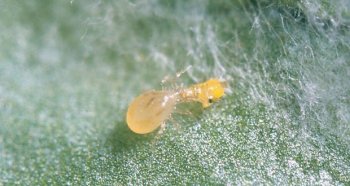
This finding may help growers protect the environment because they could reduce pesticides to keep the pest – known as thrips – at bay.
Growers may also save money because they may cut chemical use on their crop. In fact, because this thrips preys on many vegetable crops, the finding could save millions of dollars in pesticide use.
Armed with new data, it’s important for growers to use the mite to mitigate the pest, UF/IFAS researchers said.
“It will take some time for growers to be trained to use biological control agents in the field for maximum benefits,” said Garima Kakkar, who spearheaded the study as part of her master’s thesis when she was a graduate student at the UF/IFAS Tropical Research and Education Center in Homestead, Florida.
The study, published in the journal Biological Control, UF/IFAS researchers conducted a trial to investigate if certain mites would control the pest known as Thrips palmi, which poses a serious threat to cucumbers and other vegetable crops in South Florida.
Kakkar reviewed the mites known as Amblyseius swirskii and Neoseiulus cucumeris to see if they could control the thrips and keep them from harming cucumbers in a laboratory, a field and in a shade house. She found A. swirskii effectively controlled T.palmi, also known as melon thrips.
In fact, A. swirskii can control many thrips and other pests including whiteflies, broad mites and spider mites on a number of crops in addition to cucumbers, said Kakkar, now a post-doctoral research associate at the UF/IFAS Mid-Florida Research and Education Center in Apopka, Florida.
Kakkar’s findings are critical for Florida’s large cucumber industry. With 22,700 acres – Including fresh and pickled cucumbers – and 22 percent of the United States’ production, cucumbers are valuable to Florida’s economy, according to UF/IFAS reports. At $125 million, Florida accounts for 37 percent of the national market value of cucumbers.
Source: IFAS News, via HortiBiz



 Classifieds
Classifieds

